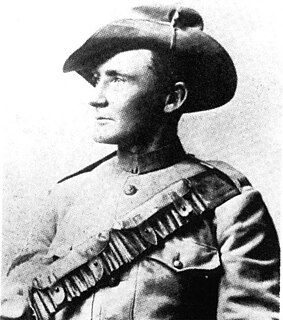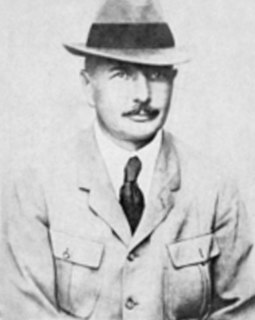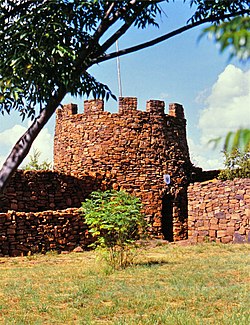
The South African Republic was an independent and internationally recognised state located in what is now South Africa, from 1852 to 1902.

Bloemfontein is the capital city of the province of Free State of South Africa; and, as the judicial capital of the nation, one of South Africa's three national capitals and is the seventh largest city in South Africa. Situated at an elevation of 1,395 m (4,577 ft) above sea level, the city is home to approximately 520,000 residents and forms part of the Mangaung Metropolitan Municipality which has a population of 747,431. It was one of the host cities for the 2010 FIFA World Cup.

Harry "Breaker" Harbord Morant was an Anglo-Australian drover, horseman, bush poet and military officer, who was convicted and executed for murder during the Second Anglo-Boer War.

The Transvaalse Staatsartillerie / State Artillery is an artillery regiment of the South African Army. As a reserve unit, it has a status roughly equivalent to that of a British Army Reserve or United States Army National Guard unit. It is part of the South African Army Artillery Formation.

Hans Merensky was a South African geologist, prospector, scientist, conservationist and philanthropist. He discovered the rich deposit of alluvial diamonds at Alexander Bay in Namaqualand, vast platinum and chrome reefs at Lydenburg, Rustenburg and Potgietersrus, which led to some of the largest platinum mines in the world, phosphates and copper at Phalaborwa in the Transvaal lowveld, gold in the Free State and the world’s biggest chrome deposit at Jagdlust near Pietersburg.
The Berlin Missionary Society (BMS) or Society for the Advancement of evangelistic Missions amongst the Heathen was a German Protestant (Lutheran) Christian missionary society that was constituted on 29 February 1824 by a group of pious laymen from the Prussian nobility.

The Pretoria Forts consists of four forts built by the government of the South African Republic (ZAR) just before the outbreak of the Second Anglo-Boer War around their capital of Pretoria.

Sekhukhune I was the paramount King of the Marota, more commonly known as the Bapedi, from 21 September 1861 until his assassination on 13 August 1882 by his rival and half-brother, Mampuru II. As the Pedi paramount leader he was faced with political challenges from boer settlers, the independent South African Republic the British Empire, and considerable social change caused by Christian missionaries.
The Diocese of the Free State is a diocese in the Anglican Church of Southern Africa.
Döhne is a South African agricultural research station 6 kilometres north of Stutterheim in the Eastern Cape. It is noted for having developed the Döhne Merino from Peppin Merino ewes and German mutton merino sires in 1939. The program bred for high fertility, rapid lamb growth and fine wool production under pastoral conditions. The breed was introduced to Australia in 1998.
Jacob Ludwig Döhne, from the Berlin Missionary Society, who was responsible for compiling A Zulu-Kafir Dictionary after spending twenty years documenting the language and dialects. He also translated the New Testament into Xhosa and Zulu.

Karl/Carl Wilhelm Posselt, was a German missionary from the Berlin Missionary Society and was active in South Africa where he became known as "the missionary with the violin".

Alexander Merensky was a German missionary, working in South Africa (Transvaal) since 1859.

The Leliefontein massacre occurred on 31 January 1902 during the South African War at the Leliefontein Methodist mission station in the Northern Cape, South Africa.
Pniel was a mission station established by the Berlin Missionary Society on the Vaal River between modern Barkly West and Kimberley, South Africa, in 1845.

Botshabelo in the district of Middelburg, in Mpumalanga Province, South Africa, originated as a mission station established by Alexander Merensky of the Berlin Missionary Society (BMS), in February 1865 in what was then the Transvaal Republic (ZAR). Merensky had fled with a small number of parishioners following the attacks on his previous mission station, Ga-Ratau, by the soldiers of Sekhukhune, the king of the baPedi. Within a year of having established the mission station, the population had grown to 420 persons.
Carl August Daniel Heese was a South African missionary during the Second Boer War. He was one of many murdered by Lieutenant Peter Handcock of the Bushveldt Carbineers, under the orders of Lieutenant Harry "The Breaker" Morant.

Lüneburg is a farming community in eDumbe Local Municipality in the KwaZulu-Natal province of South Africa.
Johannes Dinkwanyane was a member of the Pedi royal family, who was a leading early convert to Christianity. He was the half-brother of the Pedi king Sekhukhune.
Captain Percy Frederic Hunt was French-born, British army officer who was killed in action by the Letaba Commando at Duivelskloof during the Second Boer War. After Hunt's death, his subordinate and close friend, Lt.Harry Morant, responded with a series of revenge killings of both POWs and many local civilians. This led directly to the Court-martial of Breaker Morant, one of the first war crimes prosecutions in British military history.













